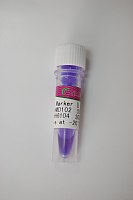Methods for Isolation and Genetic Analysis of Circulating Tumor DNA in Patient Plasma
互联网
513
Nanogram quantities of DNA circulating in blood are present in healthy subjects (1 ,2 ). A number of recent studies have shown that tumor DNA is shed in either plasma or serum of cancer patients (3 –11 ). Further, the plasma of cancer patients is enriched in DNA, up to four times the amount of free DNA compared to plasma from normal controls (4 ). Specific mutations found in genes in the primary tumors, but not present in the patient’s genomic DNA, can also be identified in the DNA from plasma, demonstrating that the source of the DNA in plasma is the tumor (5 ,6 ). Abnormalities detected include microsatellite alterations, immunoglobulin rearrangements, and hypermethylation of several genes (7 –10 ). Anker, et al.3 reported that 7 of 14 colorectal cancer patients (50%) had a codon 12 K-Ras mutation within their primary tumor, and identical mutations were found in the plasma DNA of 6 of those 7 patients (86%). Mutant DNA was not found in the plasma specimens of 7 patients whose tumors tested negative for K-Ras alterations or in healthy controls (5 ). Lauschke, et al. also reported that K-Ras mutations were detected in 22 of 30 colorectal tumor tissues, and the same mutation was identified in the serum samples of 6 of the patients (6 ). Also in that study, mutations of the APC gene were identified in 25 of 65 tumors, and 20 of these 25 patients showed the identical mutation in their serum samples. Genetic abnormalities mirroring those of the primary tumor have also been found in the blood of patients with many other types of cancer, including cancers of the lung, head and neck, breast, liver, and pancreas.








